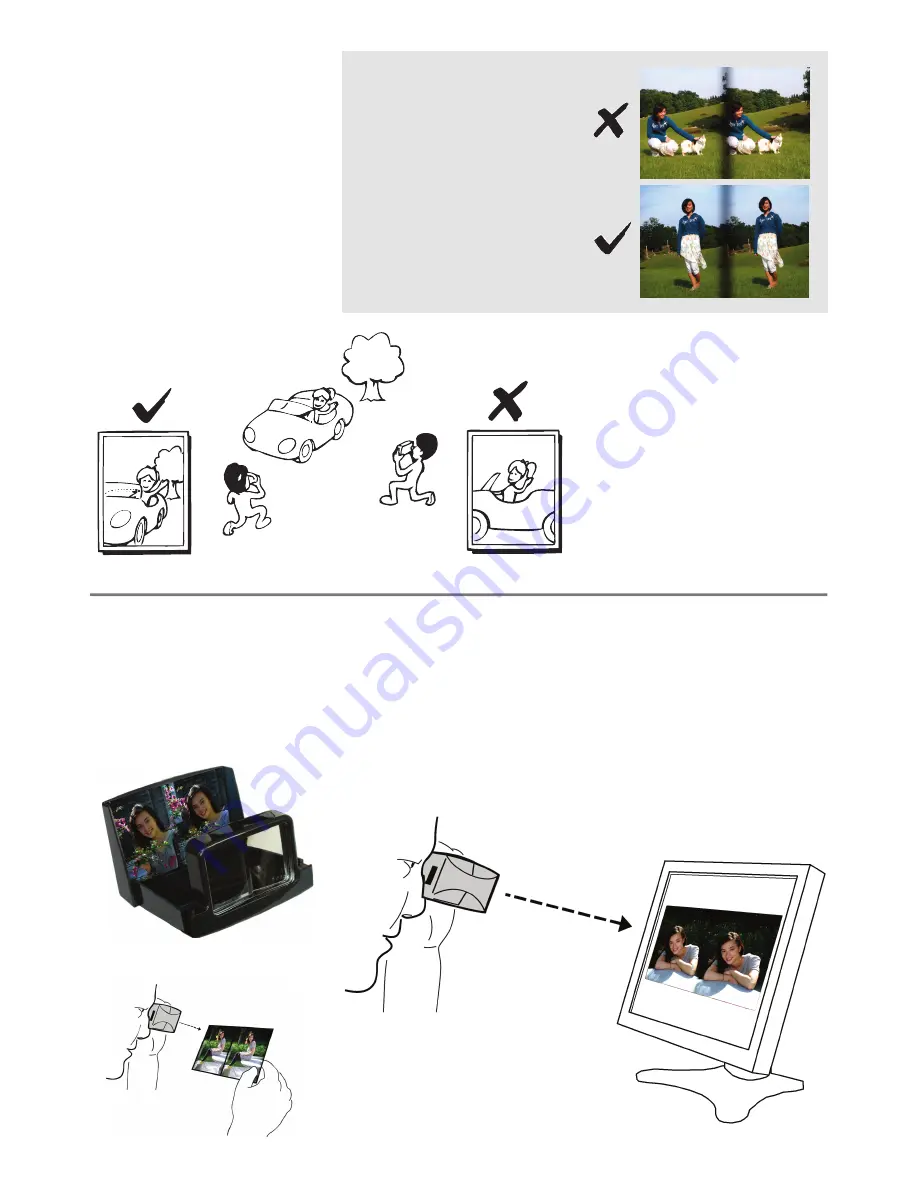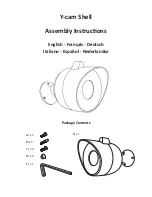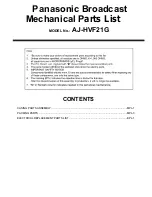
20. A 3D camera or lens records
both the shape of things and
the depth of the scene. 3D
pictures should show fore-
ground objects as well as the
background scene. When pho-
tographing a person, include
objects in front, and an inter-
esting view behind.
21. Compose the picture with the
subject material away from the
edges. This will improve cor-
respondence between the two
images.
23. Viewing: Put a 3D picture in
the Deluxe 3D Viewer (bottom
left) and hold the eyepiece 6
inches from your eyes. It may
take a few seconds for your
eyes to adjust to the 3D image.
Loreo Deluxe 3D Viewer
24. Sharing: One of the great
joys of 3D photography is in
sharing images with friends
and family. Foldable, mailable
viewers such as the Lite 3D
Viewer (print viewing) and Pixi
3D Viewer (screen viewing)
are ideal for this purpose.
25. For best clarity when viewing
3D pictures avoid bright lights
reflecting on the viewing lens
surface. Natural light falling on
the stereo print and not on the
viewing lens, will always give
the best stereo effect.
Loreo Pixi 3D Viewer
Loreo Lite 3D Viewer
22. Printing: The 3D Lens in a Cap
9005 takes two side by side
pictures in each frame. The 3D
effect is viewable immediately
after processing. 3R and 4R
prints work best. Make normal
prints. Do not make half frame
photographs.
The first picture on the right
would look better if the lens were
further back, and the young lady
and the cool cat were away from
the edges of both picture frames.
Most people compose an image
in a single frame of the image
pair. When doing this, take note
of what is happening on the
other side to make sure the sub-
ject is not cropped at the edge.






















